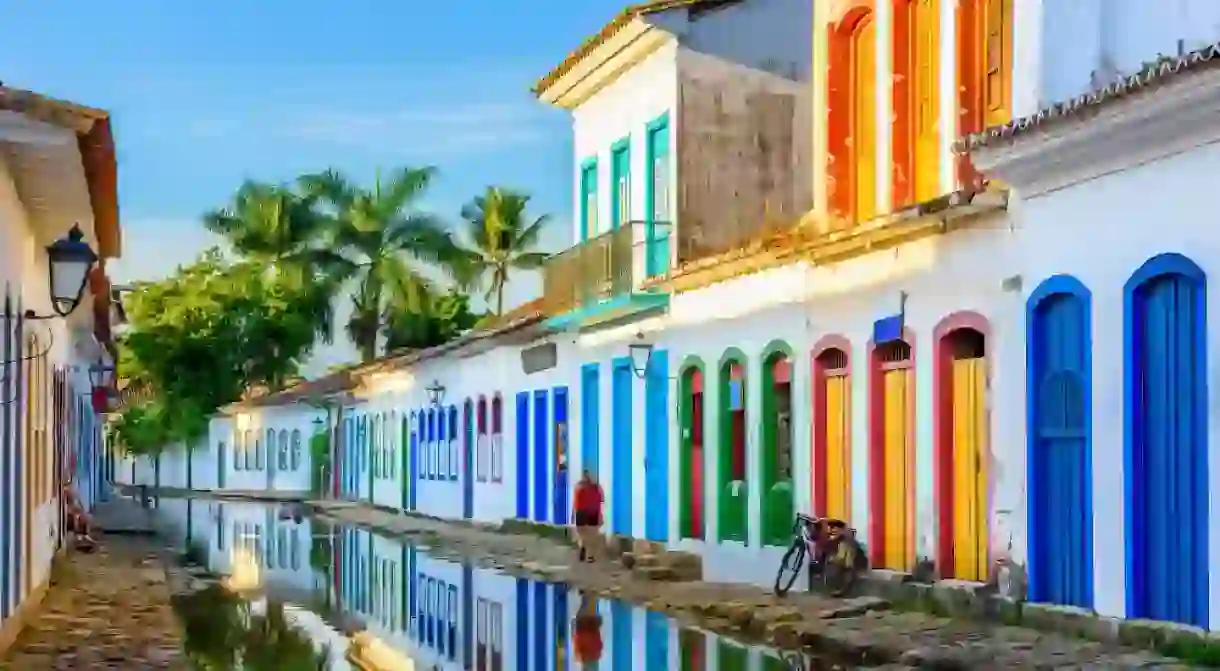The 10 Most Beautiful Towns In Brazil

Home to beautiful beaches, rich wetlands and dense rainforest, Brazil is fast becoming one of the most visited countries in South America. With that said, the nation also boasts some truly vibrant towns and cities in addition to its unparalleled natural splendor. Check out our selection of the most beautiful towns in Brazil.
Salvador
Building, Church, Natural Feature

Many Brazilians’ favorite destination for celebrating the extravagant Carnival season, Salvador is a more petite, windier street version of the country’s beloved Rio de Janeiro. Attractive for its mass of colorful Portuguese colonial architecture, picturesque coastline and joyous culture, Salvador is fast becoming one of Brazil’s tourist hotspots. The locals are some of the friendliest, most welcoming urban-dwellers you’re likely to meet. Tucked up in the northeastern state of Bahia, Salvador is just a short flight or a lengthy but beautiful bus journey from both Rio and São Paulo. Go for the vivacious Afro-Brazilian culture, the lively arts scene and the nighttime street gatherings.
Bonito
Natural Feature
El Bonito may be a tiny town compared to its seemingly gigantic neighbors, but snorkelers and nature-lovers will quickly become transfixed by this modest yet idyllic spot. Surrounded by caves and tropical fish-filled rivers, ample adventures await in the aptly named Bonito. Each hotel, hostel and guesthouse has a list of the various snorkeling opportunities available to travelers. They are able to arrange taxi transfers to and from the starting points too. Although some of the experiences verge on the pricey side for Brazil, a snorkeling trip down Rio Sucuri is both affordable and unforgettable. Take a camera to catch a snap of the cheeky monkeys playing in the trees along the river bank. Then, marvel at the unspoiled nature while floating face-down along the tranquil river.
Paraty
Architectural Landmark, Historical Landmark

A common overnight stop between Rio and São Paulo, Paraty is a welcome pocket of calm between the two imposing cities. Surrounded by impressive mountains and beautiful coastline, it’s the perfect place for a short break away from city life. Rich in Portuguese colonial architecture, the town’s cobbled streets and little doorways make for a pleasant shopping experience. The recognizable landmarks around the edges of the town are best enjoyed during a morning stroll.
Ilha Grande
Natural Feature

Rio de Janeiro
Architectural Landmark

Florianopolis
Architectural Landmark, Historical Landmark

Arguably the quintessential backpacker destination of Brazil, Florianopolis has tempted many a fleeting visitor to stay for weeks longer than they originally intended. It’s a beachside town with plenty of unusual and exciting activities to keep even the most seasoned travelers entertained. Florianopolis is known for its delicious oysters, its host of contemporary art galleries, the brilliant nightlife and an unusual variety of cachaça. Another favorite spot at which to spend carnival, the entire town bursts to life in an explosion of bright colors, loud music and crazy dancing during the weeklong spectacular in February each year.
São Sebastião
Natural Feature
A seaside escape just a short bus ride from the urban metropolis of São Paulo, São Sebastião is the perfect day trip or weekend break for those eager to leave city life behind. Loved by surfers and colonial architecture buffs alike, Maresias Beach is often referred to as ‘the Ipanema of São Paulo’. The historic town center is full of original buildings dating back hundreds of years to the colonial era. With so many beaches to explore and so much history to uncover, many choose to stay in São Sebastião for three or four days. If São Sebastião isn’t quite as idyllic and uninhabited as you envisioned, the beautiful beach-laden island of Ilha Bela is just a 15-minute ferry ride away.
Ilha Bela
Natural Feature

Campo Grande
Natural Feature
The starting point of an unforgettable journey into Brazil’s iconic wetlands, Campo Grande is the vestige of modernity for travelers to the Pantanal. Not much to look at in itself, it’s a great place to have one last restaurant meal and to stock up on treats and snacks for the next few days. Once you are in the Pantanal, the only thing slightly resembling a shop requires a 10-minute walk through snake-infested grasses to a small local community overrun by squawking chickens. It’s worth heading to this shop just for the experience, but stocking up on supplies beforehand is still very much recommended. Despite the rusticity of living in the Pantanal, visitors are blessed with a wildlife experience like no other. Capoeboras, caiman, piranhas and snakes are all common sights and the only method of travel is by tin can-style motorboats. Fish for your supper, go hiking in the remotest of places and come face-to-face with animals that don’t exist anywhere else.
Foz do Iguaçu
Architectural Landmark, Historical Landmark

The gateway to some of the most mesmerizing waterfalls in the world, Foz do Iguaçu is an unassuming city famed for its vicinity to Iguaçu Falls. It is located in southern Brazil and most travelers looking to take a day trip to the waterfalls or to pass into Argentina will find themselves driving through Foz do Iguaçu. As well as its proximity to the falls, the city is also home to a terrific bird park where visitors are able to watch and handle some magnificent South American birds. But take care, the birds fly free within the enclosures and have been known to poop on heads, cameras and anywhere else that takes their fancy.












